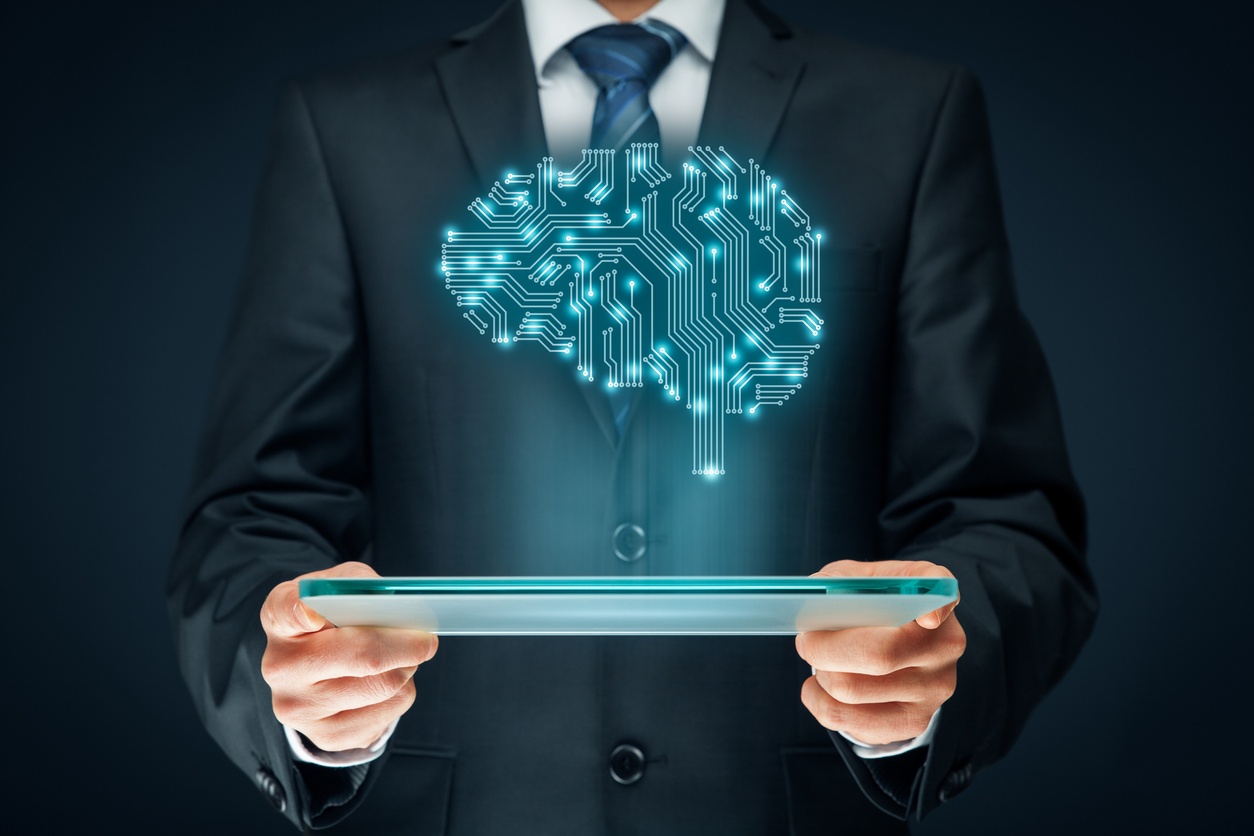Artificial intelligence is changing the possibilities and the expectations of business. It's taking over tasks which once seemed beyond the reach of computers, yet are routine and dull for people. This lets humans focus more on tasks that require more judgment and human involvement. The aim is to make them more productive, not to replace them.
Defining AI is difficult. It means using computers to emulate human intelligence and make independent decisions. When a technology becomes familiar enough, though, people stop thinking of it as AI. You can download a chess or reversi game to your phone that offers a better challenge than early software which was called AI, but now it's just called an app.
AI is often equated with machine learning. ML is one of the techniques which AI uses. Artificial intelligence also includes "expert systems", software which handles its domain like a human expert but doesn't necessarily acquire new expertise as it goes.
Businesses are under constant pressure to perform better, to have ready answers, and to use information efficiently.
Uses of artificial intelligence range from the HR office to the factory floor, and beyond the business's physical boundaries to the realm of public relations. The following are just some of the ways it is used and will grow in use.
 Production monitoring
Production monitoringThe Industrial Internet of Things (IIoT) enables greater control and better monitoring of manufacturing processes. It produces a lot of data, most of it routine, and its greatest value appears when intelligent systems analyze it. This combination is sometimes called "smart manufacturing". The global market for smart manufacturing was estimated at $200 billion in 2017.
AI-powered analytics can not only report existing problems but identify areas of inefficiency. They can adjust parameters to current temperature and humidity settings. Currently, it's mostly the largest production facilities that use these methods, but as the software becomes more widely available and the costs drop, more facilities will take advantage of them.
AI on the desktop
Everyday desktop and cloud applications are incorporating AI. Microsoft has announced a new feature in Excel, called Insights, which will let the user "identify trends, outliers, and other useful visualizations." A new version of Outlook will provide users notification of appointments, with travel directions based on real-time information.
Workplace mailboxes often have more email than their owners can handle, and AI solutions are being developed to handle it. Intelligent email clients can pull up important messages, unsubscribe from lists, and connect email messages to other software.
Lead generation and recommendations
Finding the right leads for employment, subcontracting, or sales requires going through large amounts of unstructured data. Artificial intelligence can narrow the list to a manageable one. Recommendations on a website are a kind of reverse lead generation, where the site goes through its offerings to find ones that a customer is likely to be interested in, and intelligent methods enhance their relevance.
Early forms of lead and recommendation generation relied on simple correlation; many people who bought X also bought Y. Increasingly, software is using techniques that take psychology, demographics, and other available information into account. The recommendations and leads provided by major websites, such as LinkedIn and Amazon, are increasingly powered by AI methods.
Tracking customer and public opinion
Business intelligence is another natural-language application area. The information available from customers and leads is largely unstructured human communication. It gives a more authentic and complete picture of what people like or dislike than any feedback form.
Sentiment analysis gathers information not only on facts such as delivery times and returns but on how people respond emotionally to transactions. Tools such as Digimind monitor social media, discovering trends in people's reactions to companies and events. They apply ranking methods so that the voices that have the most influence get a proportional boost in weighting. This kind of analysis can help businesses to see how well an ad campaign is going or how customers are receiving a new product.
Employee relations
Managing people might seem like the last area AI could step into. It can't replace human managers, but it can help them to do a better job. AI-based Business intelligence within the organization helps to evaluate employees, taking into account facts which managers overlook and hopefully avoiding their biases. It can identify the kinds of training that would do the most to improve their performance. When there is a drop in morale, an AI system might detect the signs before a manager does. If the manager sees a problem, bringing a computer analysis to higher management will carry more weight than just expressing suspicions.
While AI isn't immune to biases in its programming, it can be directed to ignore factors such as race and sex. Its evaluations may not be the final word, but it can provide a corrective to biases which managers may be unaware of. If a pattern of differences emerges between the manager's evaluations and the AI's, the manager should think about the reasons.
Supplementing, not replacing, human intelligence
In all these cases, humans will continue to have the last word. Managers will make decisions. Customer support representatives will step in where chatbots are out of their depth. Recruiters and salespeople will review and select from the leads which a computer gives them. The future isn't a world where machines decide everything and we sit with folded hands, but one that offers many new opportunities.



